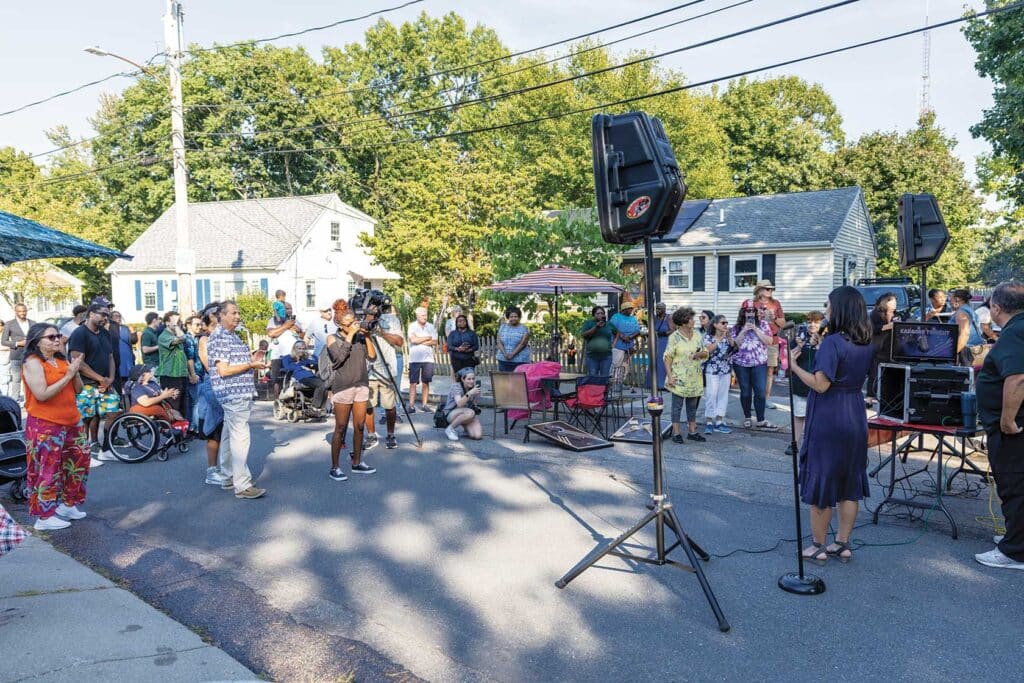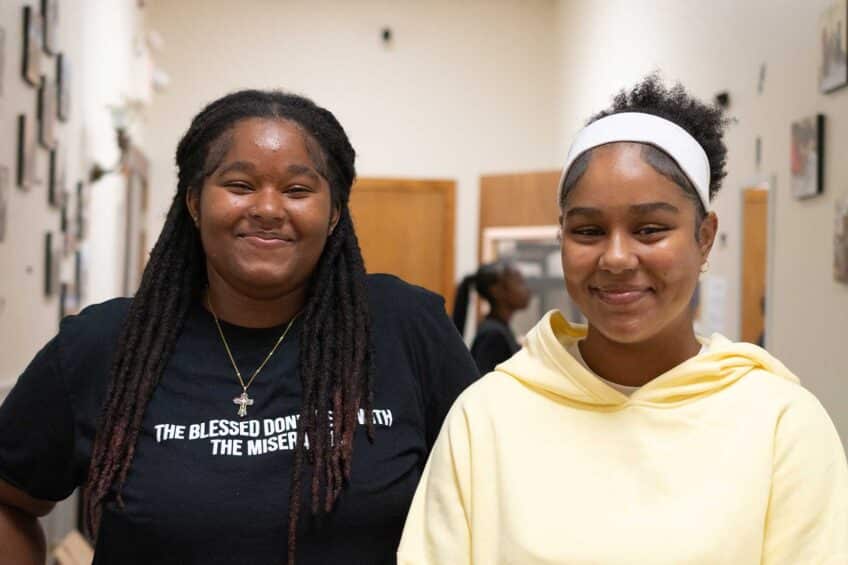
A patch of forest in the middle of Boston is a little bit bigger with the addition of a one-acre space to the Sherrin Woods urban wild.
The expansion expands one of the city’s largest wild green spaces, at the edge of Hyde Park and Roslindale, a natural resource that provides important heat and flooding prevention benefits to the surrounding communities.
It adds a narrow space between the neighboring Weider Park, owned by the state Department of Conservation and Recreation, and the commuter rail track, that the city purchased using eminent domain for $510,000 of Community Preservation Act funds. That acre had previously been privately-owned.
The space is part of a network of urban wilds across the city. Green spaces tended by the city that are primarily aimed at preserving pockets of native New England habitats in Boston, though they may also offer recreational opportunities to community members.
The acquisition expands an already sizable site. According to city data, at just shy of 25 acres, the Sherrin Woods space is now the second largest in the urban wilds network — official rosters of city open spaces count the 58.5 acre Boston Nature Center in Mattapan as an urban wild, though it doesn’t appear on the program’s website.
It clocks in at over three times the size of the average urban wild in the city, and though it has been impacted by discarded trash and a takeover of invasive species, community members still point to it as an important local resource.
“It’s rare to have a site this large and to have an opportunity to grow it even larger,” said Paul Sutton, the city’s manager of urban wilds. “And although it’s got its bumps and bruises, it’s still wooded, and provides already to the goal of tree canopy preservation.”
A space like Sherrin Woods can provide important natural benefits for the community. The city points to the woods, and the expansion to the space, as a boon to the neighbors to keep temperatures down and to reduce flooding from stormwater.
“This is really important for this neighborhood,” Sutton said. “Air quality, cooling and pollution reduction — those are, those are really key.”
And the community of mature trees together can bring additional benefits, said David Meshoulam, executive director at Speak for the Trees, a local nonprofit focused on Boston’s urban tree canopy.
“They’re actually growing in a way where if one is having a hard day or a hard year, another one will sort of support it. That allows them to thrive,” he said, pointing to research that suggests trees in a community can share resources and nutrients with each other.
Trees growing in proximity and in a woodland can also have increased basic physical supports, like reduced impact from high winds and more soil in which to grow.
A space like Sherrin Woods can be also be a prominent resource in reducing flooding during storms, especially as a changing climate brings more precipitation and in a city like Boston where so much of the built-up infrastructure is constructed on filled land..
“The big challenge of stormwater management in urban landscapes is that we have so much paved area — roads, parking lots, building tops — that don’t allow the water to naturally absorb into the ground,” said Martin Pillsbury, environmental director at the Metropolitan Area Planning Council.
That water instead goes into stormwater systems that pull it away from streets, but that can be overwhelmed if the volume of water is too great. That flooding can then impact nearby properties and basements.
As a result, green spaces like Sherrin Wood mean a spot where more of that water can be absorbed into the ground without flowing into that network of pipes.
“If we could have more of these green spaces, the more of them we can have, the more we would be able to mitigate,” Pillsbury said. “I think our problem is we have too few of them begin with, so every acre helps.”
Recent restorations — the second of two phases that together totaled $800,000 — at the older part of the Sherrin Woods site looked to improve and care for wetlands ecosystems at the site which are key to stormwater management. One effort included the maintenance of a stormwater basin which included the planting of wetlands plants that are better equipped to handle precipitation.
“This whole area is a low point in the neighborhood, so a lot of stormwater from the surrounding roads can infiltrate,” Sutton said. “That phase two project is really to allow stormwater from the street to flow into this stormwater basin. The basin would fill up and the plants would absorb the water and let it filter the pollutants.”
It would also serve as the first line of water collection, holding the water there so any water contaminated by runoff from streets doesn’t hit the more pristine wetlands further back.
All the paved land also impacts heat in cities. Things like asphalt and other paved surfaces trap and hold heat more than parks and green spaces and don’t have the cooling effect of transpiration, where trees and other plants release water from their leaves.
It’s one of the reasons the city is looking to expand its urban tree canopy generally. And Meshoulam said the wooded areas in Boston’s urban wilds network can really bolster that effect.
“To preserve these spaces, in one fell swoop, you’re preserving dozens and dozens of trees that can grow in a way natural to them. They can thrive in a way where they’re not confined to a narrow planting strip,” he said. “They’re such an important part of the geography of the city.”
The expansion also allows the city to make sure the bulk of the urban wild is protected from potential flooding that could have occurred if water infrastructure and the buried Stony Brook in the new acre of the park were disturbed during any development on the site.
“This is a 25-acre woodland that would be at risk of being damaged if we hadn’t protected the Sherrin Woods addition,” said Patricial Alvarez, assistant director at the Southwest Boston Community Development Corporation. “So that’s why it means so much to our whole community.”
And, at the end of the day, supporters said the benefit of just providing green space shouldn’t be underestimated.
“It’s a treasure for all the [natural benefits], and as a place for people to go and experience nature,” Alvarez said. “It’s good for people’s physical health to be in the woods. It’s good for their mental health. It’s good for children to experience.”
A network of trails crisscrosses the space and that landscape, and the host of restoration projects in the space have provided a chance for community kids to get involved through the Southwest Boston Community Development Corporation’s Green Team, a youth employment and environmental stewardship program, which works to restore woodlands and urban wilds in Hyde Park and has been engaged with past restoration efforts in the space.
Alvarez, who manages the Green Team, said work at Sherrin Woods has been an important opportunity to get kids engaged with caring for green spaces and being invested in the city’s natural resources — something she said is key to making sure that climate action continues moving forward.
“Many youth who have never been in the woods in their lives get to experience what it’s like to be in the woods,” she said. “Whether it’s creating swales [plant-filled channels] for water runoff, restoring trails, learning to identify and remove invasive species, pruning trees, they feel very proud of the work that they’re doing and how it’s helping keep the woods healthy so the woods can keep us healthy.”






